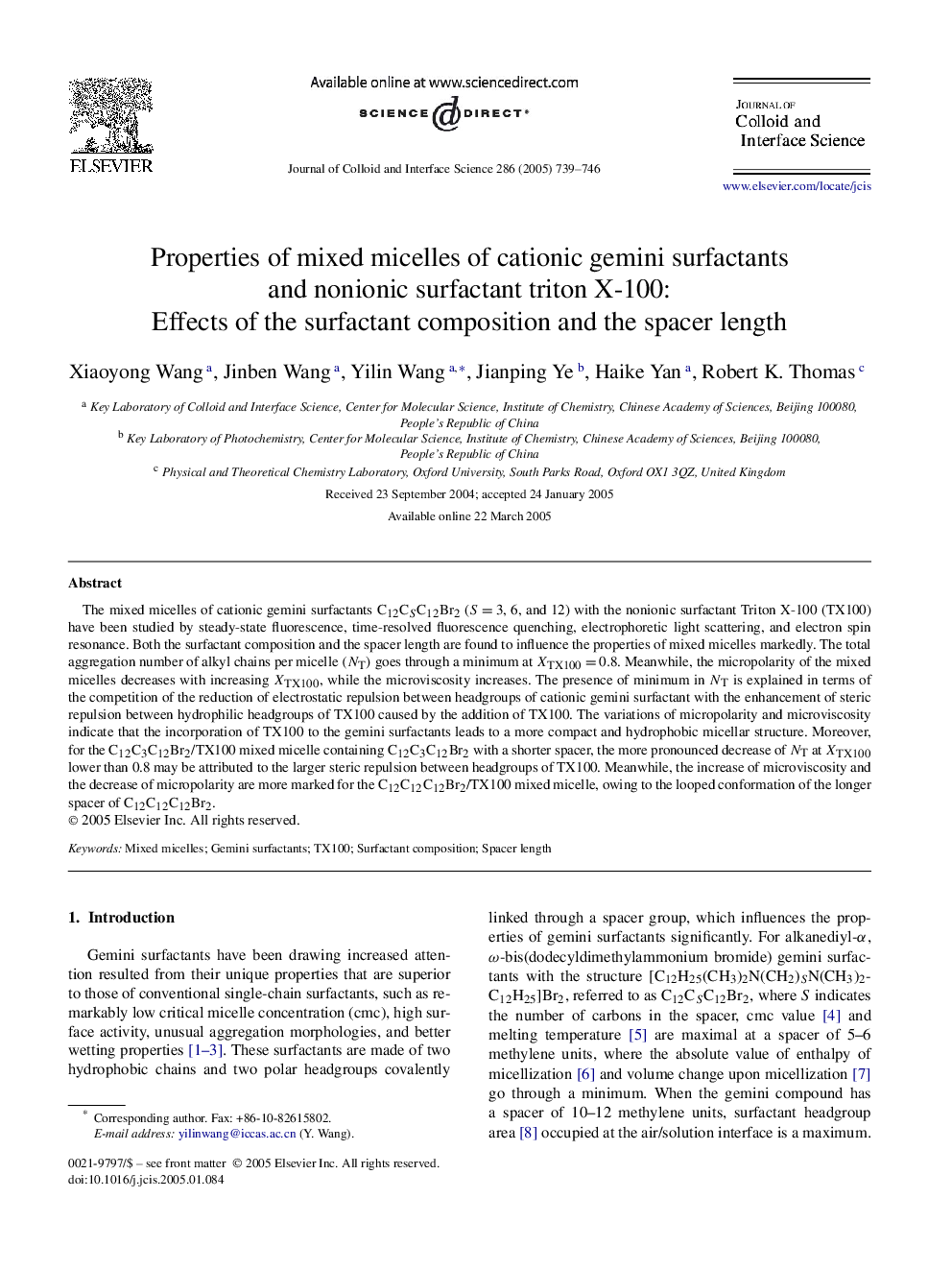| Article ID | Journal | Published Year | Pages | File Type |
|---|---|---|---|---|
| 10377990 | Journal of Colloid and Interface Science | 2005 | 8 Pages |
Abstract
The mixed micelles of cationic gemini surfactants C12CSC12Br2 (S=3, 6, and 12) with the nonionic surfactant Triton X-100 (TX100) have been studied by steady-state fluorescence, time-resolved fluorescence quenching, electrophoretic light scattering, and electron spin resonance. Both the surfactant composition and the spacer length are found to influence the properties of mixed micelles markedly. The total aggregation number of alkyl chains per micelle (NT) goes through a minimum at XTX100=0.8. Meanwhile, the micropolarity of the mixed micelles decreases with increasing XTX100, while the microviscosity increases. The presence of minimum in NT is explained in terms of the competition of the reduction of electrostatic repulsion between headgroups of cationic gemini surfactant with the enhancement of steric repulsion between hydrophilic headgroups of TX100 caused by the addition of TX100. The variations of micropolarity and microviscosity indicate that the incorporation of TX100 to the gemini surfactants leads to a more compact and hydrophobic micellar structure. Moreover, for the C12C3C12Br2/TX100 mixed micelle containing C12C3C12Br2 with a shorter spacer, the more pronounced decrease of NT at XTX100 lower than 0.8 may be attributed to the larger steric repulsion between headgroups of TX100. Meanwhile, the increase of microviscosity and the decrease of micropolarity are more marked for the C12C12C12Br2/TX100 mixed micelle, owing to the looped conformation of the longer spacer of C12C12C12Br2.
Related Topics
Physical Sciences and Engineering
Chemical Engineering
Colloid and Surface Chemistry
Authors
Xiaoyong Wang, Jinben Wang, Yilin Wang, Jianping Ye, Haike Yan, Robert K. Thomas,
